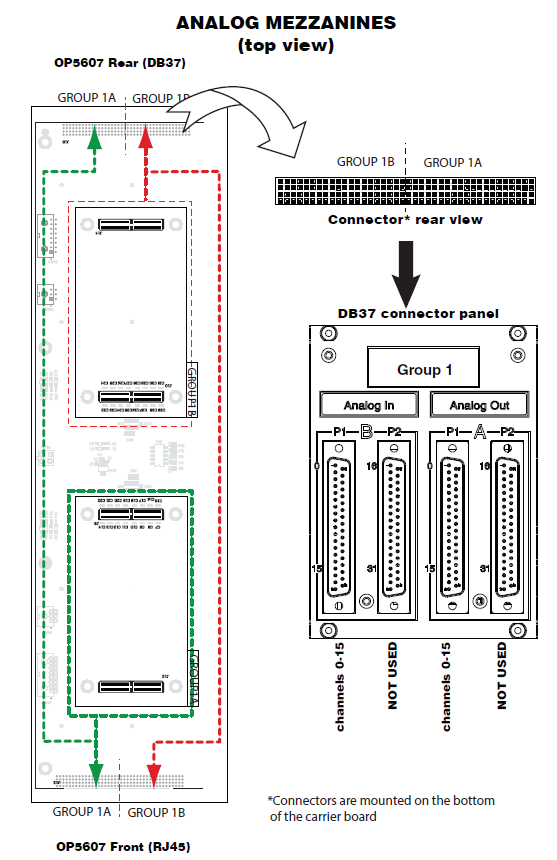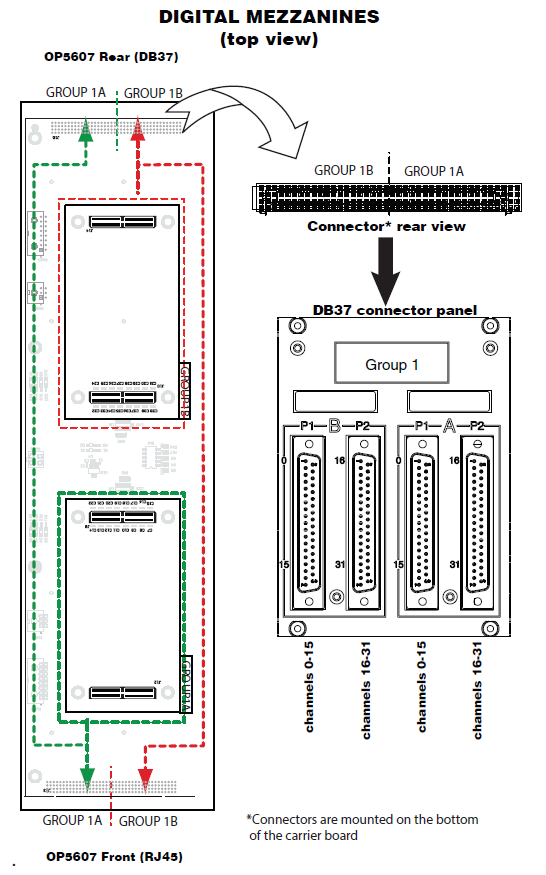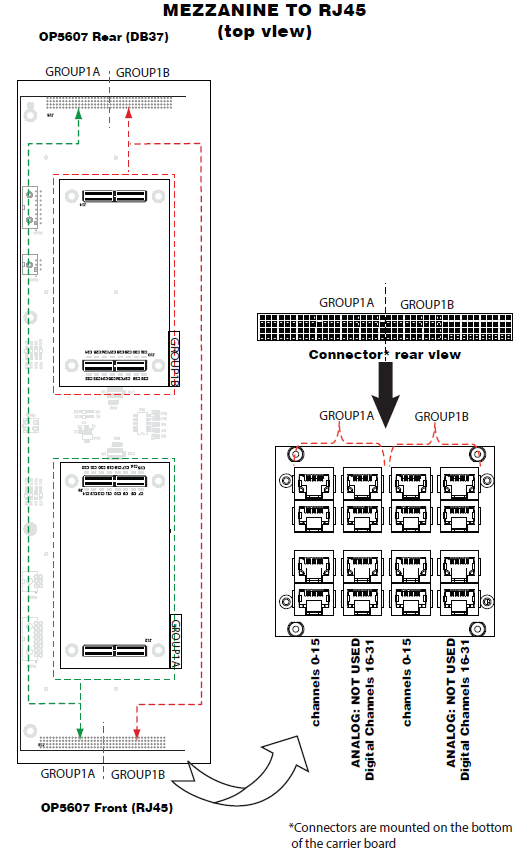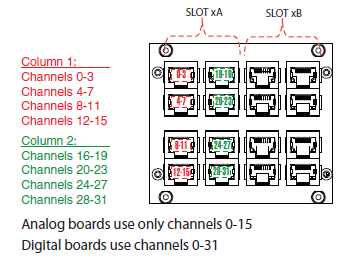Documentation Home Page ◇ Hardware Home Page
Pour la documentation en FRANÇAIS, utilisez l'outil de traduction de votre navigateur Chrome, Edge ou Safari. Voir un exemple.
OP5607 IO Connectors
DB37 Connectors
Each pair (A & B) of OP5300 mezzanine modules installed on the carrier is linked to four female DB37 connectors (I/Os) on the back of the chassis:
The first two connectors (left to right) represent channels from Group B, which are linked to the conditioned channels from the rear mezzanine. The last two connectors (left to right) represent channels from Group A, which are linked to the conditioned channels from the front mezzanine.
Analog Mezzanines
(top view)
If the front mezzanine is an analog module (DAC or ADC), the 16 channels are on connector A, P1 and P2 does not carry any signals.
If the back mezzanine is an analog module (DAC or ADC), the 16 channels are on connector B, P1 and P2 does not carry any signals.
Digital Mezzanines
If the front mezzanine is a digital module (Din or Dout), the first 16 channels (00 to 15) are on connector A, P1 and the next 16 channels (16 to 31) are on connector A, P2.
If the rear mezzanine is a digital module (Din or Dout), the first 16 channels (00 to 15) are on connector B, P1 and the next 16 channels (16 to 31) are on connector B, P2.
All signals are represented by a positive-negative pair that are always available on the connector pins, for example: for channel 08 : (+CH08, -CH08)
RJ45 connectors
Each RJ45 monitoring panel on the front of the OP5607 simulator connects to front and back mezzanines. The following image illustrates how the mezzanines are linked to the connectors.
RJ45 Channels Assignment
Each mezzanine is assigned two columns of RJ45 connectors. Each column represents a series of channels, divided into 4 channels per connector, as shown in the figure below.
OPAL-RT TECHNOLOGIES, Inc. | 1751, rue Richardson, bureau 1060 | Montréal, Québec Canada H3K 1G6 | opal-rt.com | +1 514-935-2323
Follow OPAL-RT: LinkedIn | Facebook | YouTube | X/Twitter



